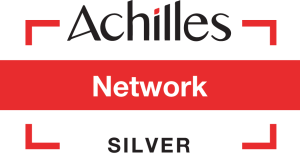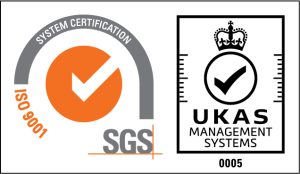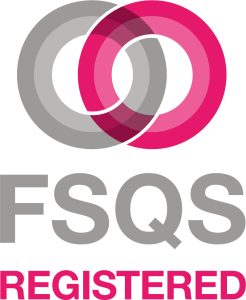How Splunk Observability Suite meets the challenges of the Cloud
Author: Paul Winchester
Release Date: 22/07/2021
There are many benefits of operating in the Cloud, accelerated innovation, greater agility, reduced costs and plenty of others. If you’ve just started on that journey, you may be starting to become aware of the challenges, and for those more invested in Cloud technologies, many are realising the benefits are not happening as swiftly as promised.
What are the challenges?
Dynamic systems that can scale up and down based on demand are by their nature ephemeral and complex. Cloud native technologies such as microservices and Kubernetes operate completely differently to traditional monolithic systems. These new approaches offer great flexibility and speed for your applications, but they also present new operational challenges which need to be addressed.
Here are some questions you might be asking:
How do I bring together monitoring of my Cloud stack?
- Maybe you have multiple Cloud platforms, or a significant on-premise estate that ties into the front end system. You don’t want to have separate tools for each environment, a single point of reference will make troubleshooting much more efficient.
How do I understand what is happening within my applications?
- There are probably multiple layers, with orchestration such as Kubernetes, running clusters with microservices. These environments change according to the demands on them, so they come and go, and if something goes wrong, the components that were running when the error occurred are likely long gone.
… which leads to, how do I manage root cause analysis?
- Incident management is a key part of modern IT, and having a robust process in place is critical to successfully leveraging the benefits of Cloud computing. Root cause is crucial for day to day operations, but it is also important for continuous improvement, so that your applications can continue to evolve and deliver a better customer experience.
And what about those customers, how are they doing?
- As customers and internal users' expectations increase, it becomes all the more important to ensure that the user experience is optimised. Slow page loads, and unresponsive applications have a real world impact, and insight into performance at all levels of the system is essential.
How do you test and optimise your applications?
- All software needs testing, and not just for functionality but also for performance. To improve user experience, you need to have a clear understanding of how your application performs, and a means to compare that to a base line. This allows you to identify issues with your production environment, and helps drive continuous improvement to optimise your applications.
What happens when things go wrong?
- Anyone who has spent any time around IT systems knows that whatever you do, however good your processes are, something somehow will go wrong. The key is to have the tools in place to quickly identify that there is a problem, where it is, what is affected, and how serious it is, and then get the right people aware so that they can fix it.
Enter Splunk Observability Cloud
The Splunk Observability suite of applications can address all of these questions.
Infrastructure Monitoring
- Covers your monitoring needs for both Cloud and on premise environments.
- Provides a comprehensive range of integrations and out of the box dashboards, you can quickly gain insights into your entire estate, and bring down MTTR.
- Purpose built for Cloud, and fully scalable as you expand your Cloud investment.
Application Performance Monitoring
- Collects all the traces and spans generated from your applications, without sampling, to detect issues in seconds.
- AI driven directed troubleshooting gives near real time analytics, significantly reducing MTTR.
- Having all the data to review aids post incident reviews to ensure lessons are learned, and improvements are implemented.
Real User Monitoring
- Leverages the full fidelity tracing from APM, and links them to their corresponding back end traces and underlying architecture to measure user experience.
- Provides fast troubleshooting and comprehensive web browser performance analysis.
- Used together, Splunk APM and Splunk RUM provide the only full-fidelity, end-to-end visibility of the complete user transaction.
Synthetic Monitoring
- Allows teams to test and set baseline performance for applications by simulating user activity in a consistent manner.
- Provides recommendations for improving application performance using the web optimization engine.
Log Observer
- Completes the circle of Observability, allowing analysts to drill down to the specific errors reported, to help fully understand why an incident occured.
- Based on the industry leading Splunk Enterprise platform, Log Observer has been optimised for DevOps workflows, giving SREs everything they need to minimise the impact of problems on customers.
On Call
- Reduces mean time to acknowledge with automated incident response.
- Provides integrations with key security, messaging and incident management tools, such as Okta, Microsoft Teams and JIRA.
- Improve flexibility by using the mobile app.
Conclusions
The Splunk Observability Cloud meets all the challenges of the Cloud, and it also offers a number of benefits that puts it well ahead of the competition.
- Open source foundation. The OpenTelemetry collector, that underpins the data collection process, is open source, backed by key industry players, with Splunk at the forefront.
- No vendor lock in. Your instrumentation is not tied to Splunk, but can be used with other tools in the market without going through the pain of rewriting code.
- Scalability. Observability is an Enterprise grade solution, which can scale to match any level of Cloud environment. In fact Splunk use it themselves to manage their own Splunk Cloud platform, used by 1000s of customers globally.







